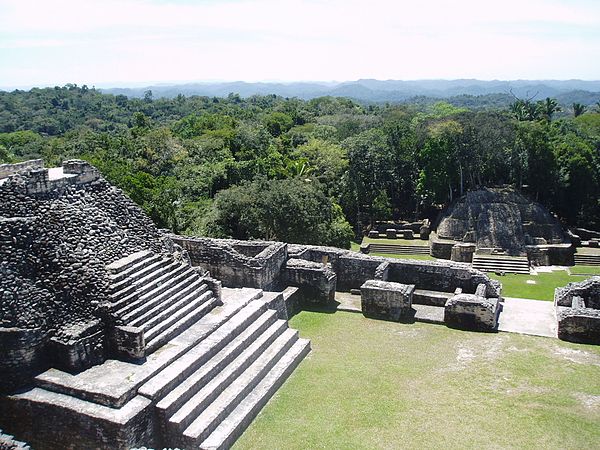Arlen F. Chase

Arlen F. Chase (born 1953) is a Mesoamerican archaeologist and a faculty member in the anthropology department at Pomona College, Claremont CA. Previously, he was a professor at the University of Nevada, Las Vegas and served a variety of administrative roles (Departmental Chair for Anthropology; Associate Dean for the College of Sciences) at the University of Central Florida over the course of his 32 year stay at that institution. He is noted for his long-term research at the ancient Maya city of Caracol, Belize and for exploring landscape traces of Maya civilization using lidar.[1]
Chase took his BA and PhD in Anthropology at the University of Pennsylvania, and then worked in the University of Pennsylvania’s advising office and anthropology department. Although excavating at Grasshopper Pueblo in the American Southwest, his Mesoamerican fieldwork began with research stays at the site of Tancah in Mexico and at Ixtutz, Yaxha, and Tayasal in Guatemala. He carried out early excavations in the Motagua Valley and at Quirigua in Guatemala before moving to Belize to carry out investigations at Nolmul and in the Orange Walk. From 1979 through 1985, he co-directed archaeological excavations at Santa Rita Corozal with his wife Diane Z. Chase. In 1985, with his wife, he started the Caracol Archaeological Project in western Belize, which is still on-going. The Chases have undertaken extensive excavations at this large Maya city, defining a sequence from the Preclassic through the Terminal Classic for Caracol and from the Preclassic through the Historic Periods for Santa Rita Corozal. At Caracol, they have also worked to preserve the built structures in the urban complex as part of Belize’s cultural heritage.
Chase moved to the University of Central Florida in 1984 and was there through 2016. He helped to transform that institution into one of the top American universities in the study of the Southern Lowland Maya. He and his wife have together published many peer reviewed articles and books on the subjects of hieroglyphics, settlement patterns, ancient cities and urbanism, and ceramic studies of the Maya.
In 2016, he joined the anthropology department at the University of Nevada, Las Vegas (UNLV).
In 2019, he began teaching at Pomona College.
Chase teamed with University of Central Florida biologist Dr John Weishampel to obtain a NASA Space Archaeology Program & UCF-UF Space Research Initiative grant to use lidar (light radar) sensors to detect changes in the rainforest canopy, reforestation patterns and modifications to archaeological sites. The lidar system was installed in an aircraft flown over Caracol.[1] The system used laser beams that were projected to the ground, bounced back and were recorded. These recordings produced a detailed three dimension map of both the Forest canopy and the ruins of Caracol.[2] The speed and precision of the system was far superior to traditional ground surveys.[3][4] In a 2013 talk at the University of Minnesota, Arlen and Diane Chase talked about their most recent work at Caracol, including data generated by lidar.[5]
